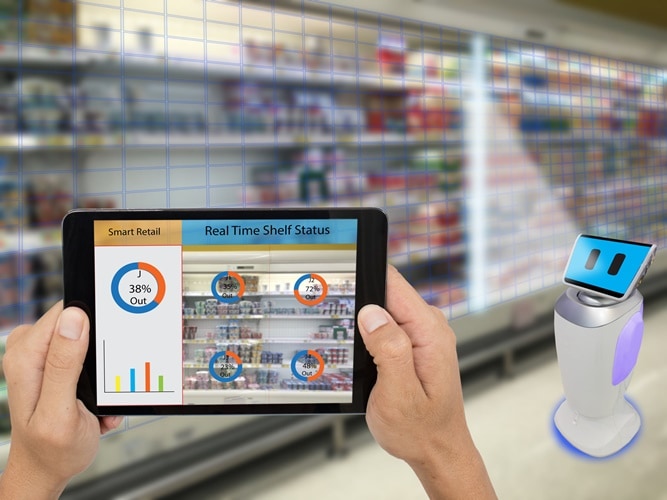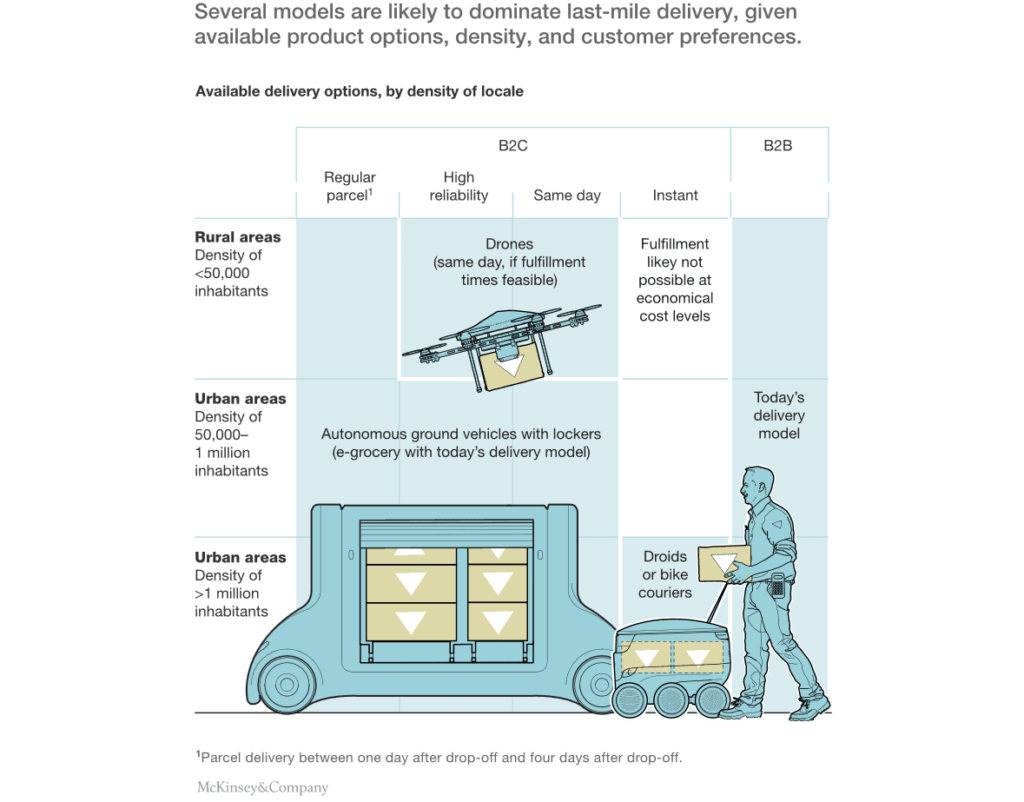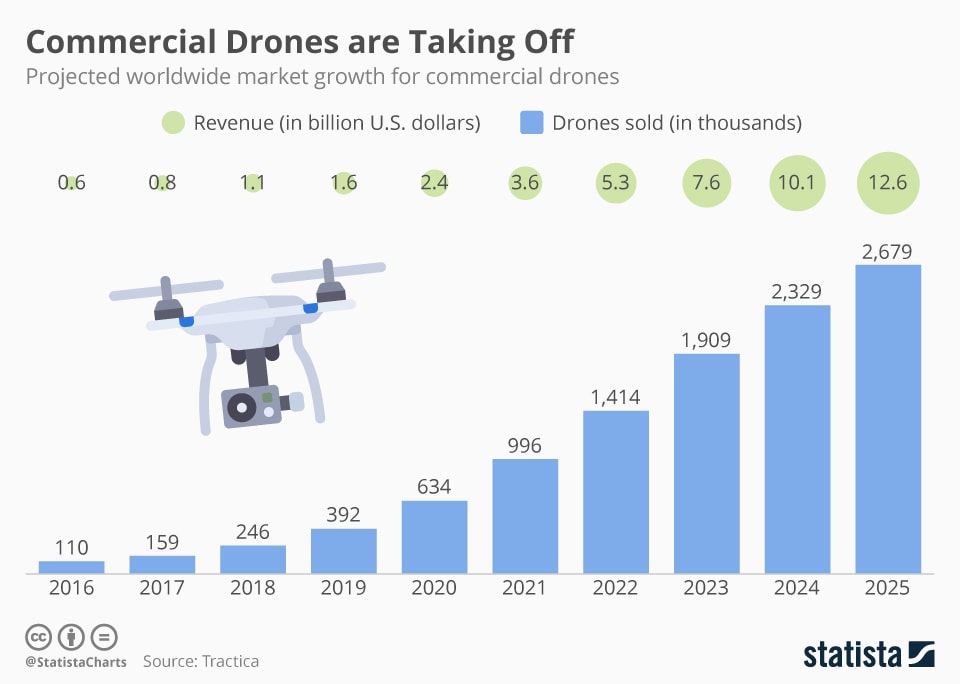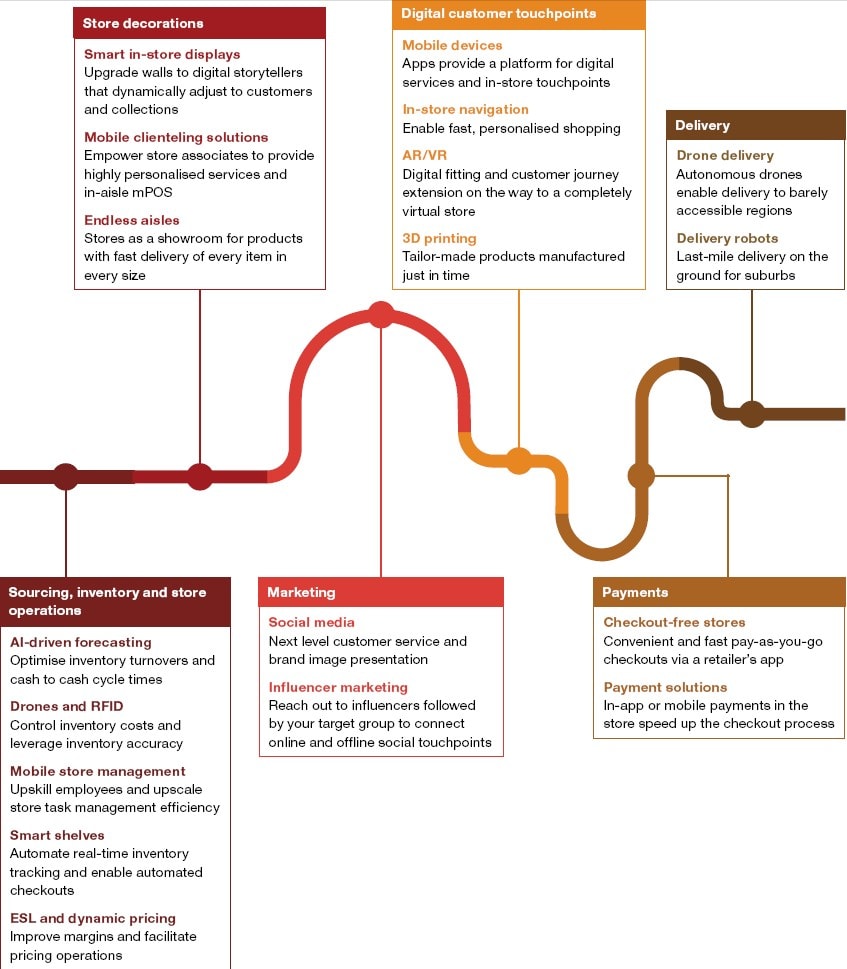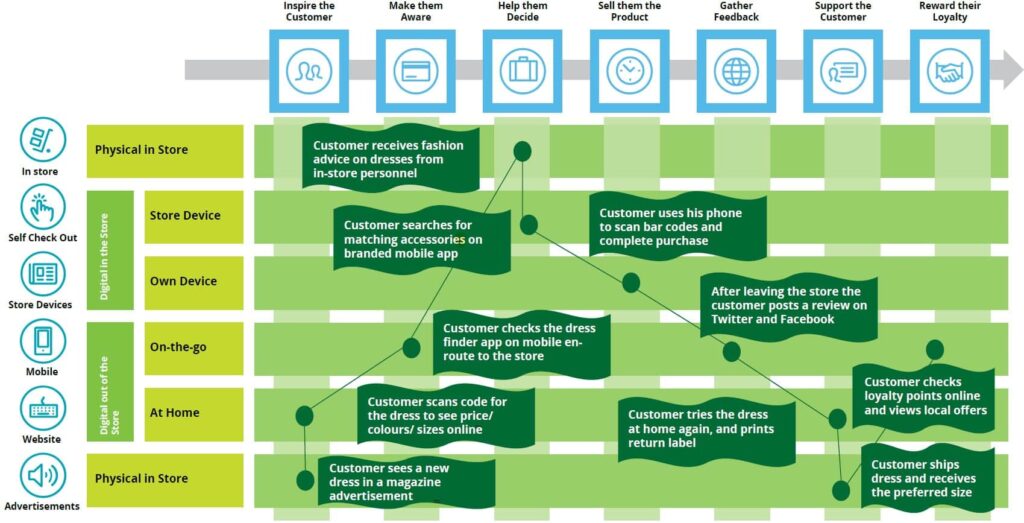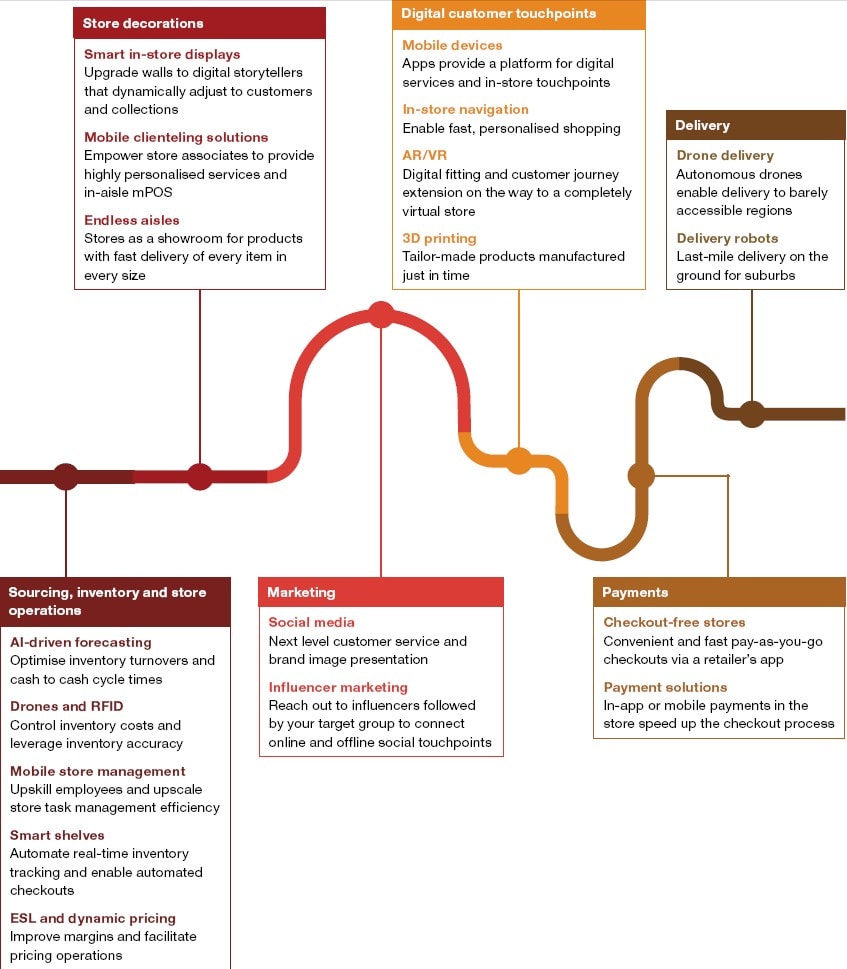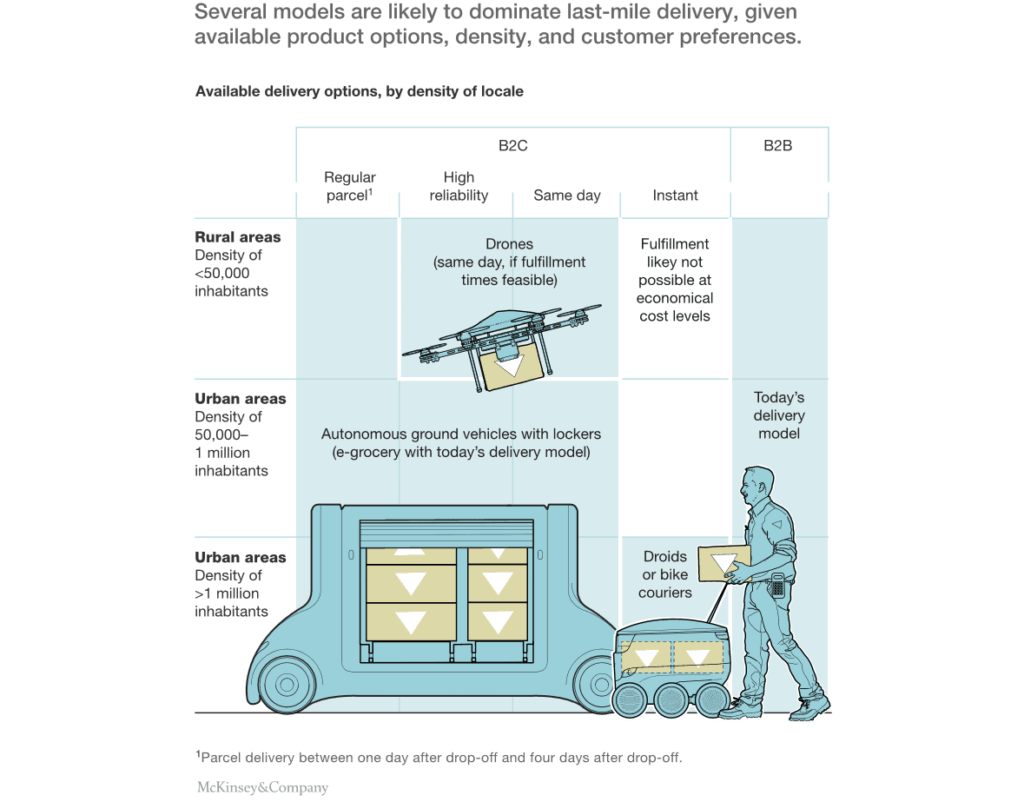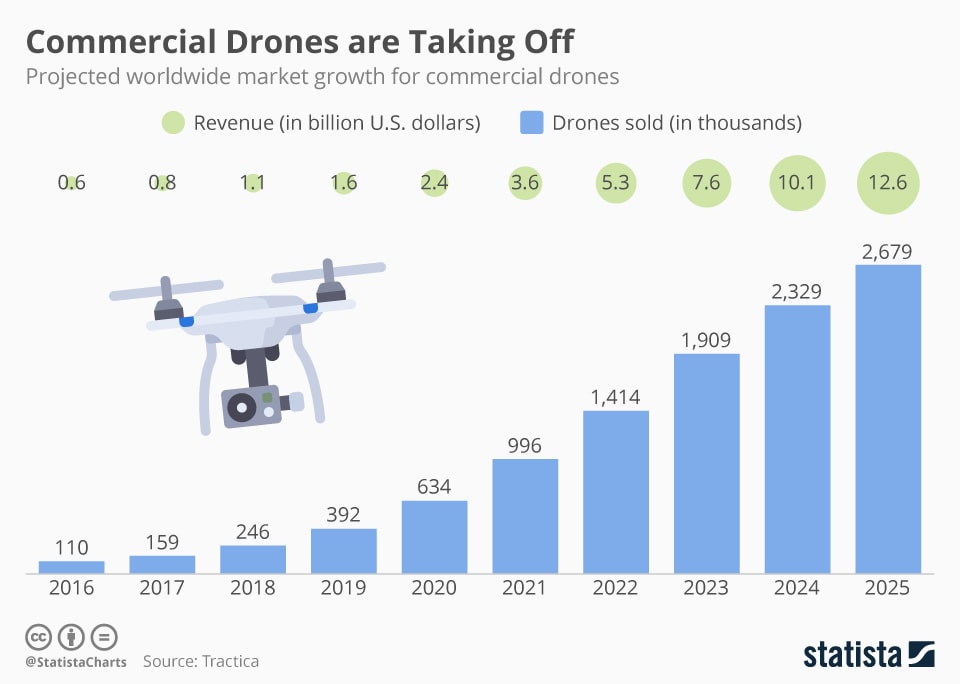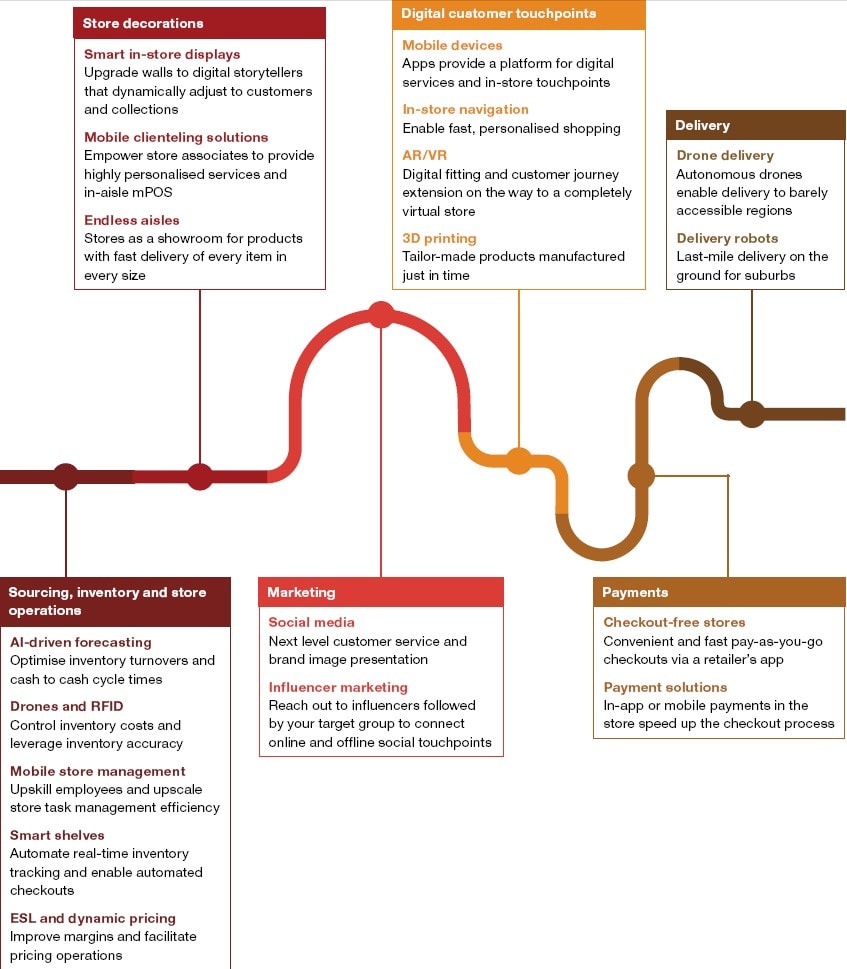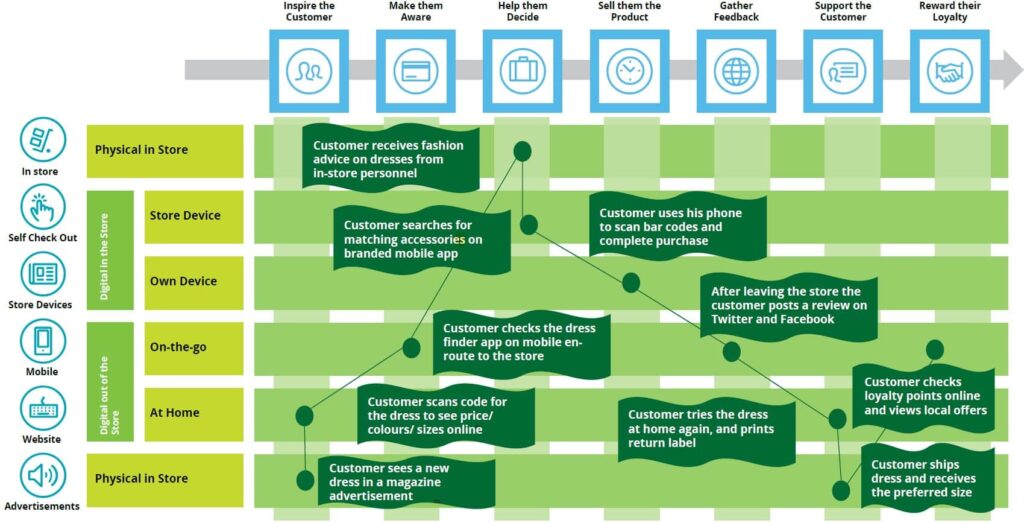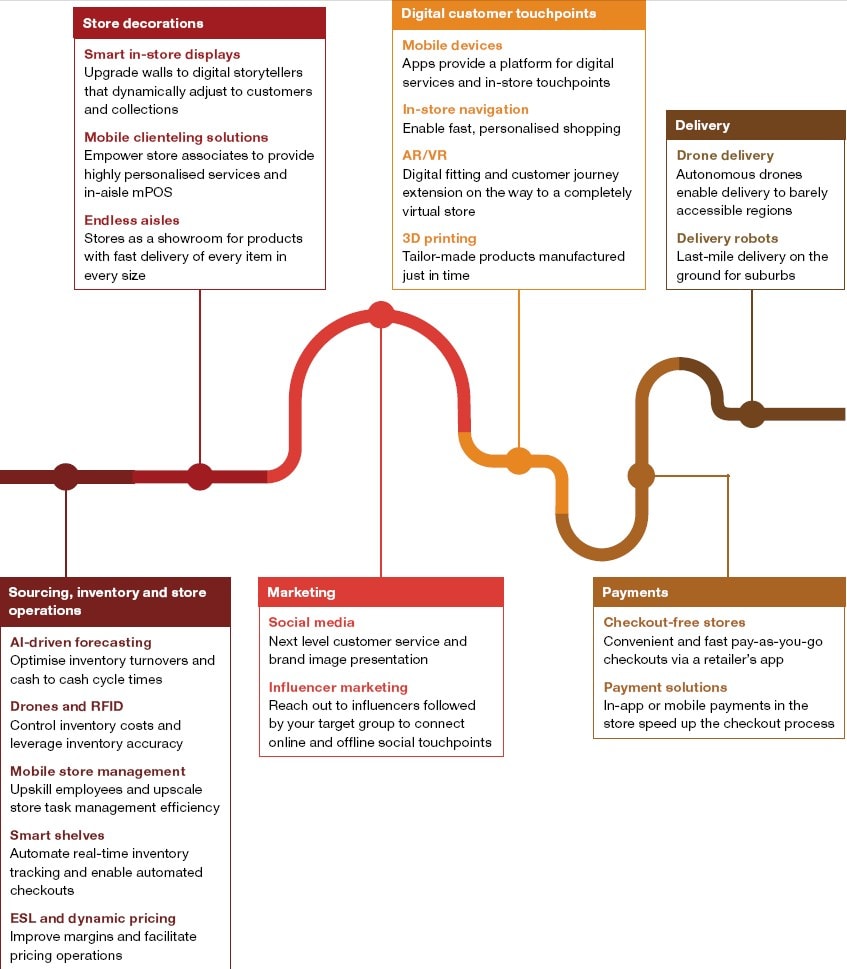Article by: Asst.Prof. Suwan Juntiwasarakij, Ph.D., MEGA Tech Senior Editor
ลองตั้งสังเกตร้านค้าที่ผู้อ่านจับจ่ายใช้สอยจะเห็นว่าการเปลี่ยนแปลงระลอกใหญ่กำลังมาถึง สำหรับกิจการค้าปลีกจะอยู่ยากขึ้น เนื่องจากการเปลี่ยนแปลงหรือปรับปรุงวิธีการค้าขายเล็กๆ น้อยๆ จะไม่สามารถช่วยให้ค้าปลีกแบบดั้งเดิมรอดจากวิกฤตครั้งนี้ไปได้ ตามรายงานของ WWP World Global Retail Forum เราอยู่ในช่วงที่สองของยุคค้าปลีกดิจิทัล ซึ่งเป็นยุคที่อุปกรณ์สวมใส่อัจฉริยะ, ชั้นวางสินค้าอัจฉริยะ, โดรน, และหุ่นยนต์เข้ามามีบทบาทเปลี่ยนรูปแบบการจับจ่ายใช้สอยของผู้บริโภคและรูปแบบการดำเนินธุรกิจของร้านค้าปลีก อย่างไรก็ตามภูมิทัศน์ค้าปลีกในอนาคตจะแปลกและแตกต่างไปจากที่เป็นอยู่ในปัจจุบันเป็นอย่างมาก เพราะในช่วงที่สามของยุคค้าปลีกดิจิทัลนั้นจะมิได้ให้ความสนใจกับโทรศัพท์ เครื่องมือสื่อสาร และหน้าหน้าจอ แต่เทความสนใจให้กับประสบการณ์ความเป็นมนุษย์ของผู้บริโภคอย่างเต็มรูปแบบและไร้รอยต่อ สิ่งที่เรากำลังจะประจักษ์เป็นสักขีพยานนั้นไม่ใช่เป็นเพียงแค่ “วิวัฒนาการ” แต่เป็น “การปฏิวัติ”
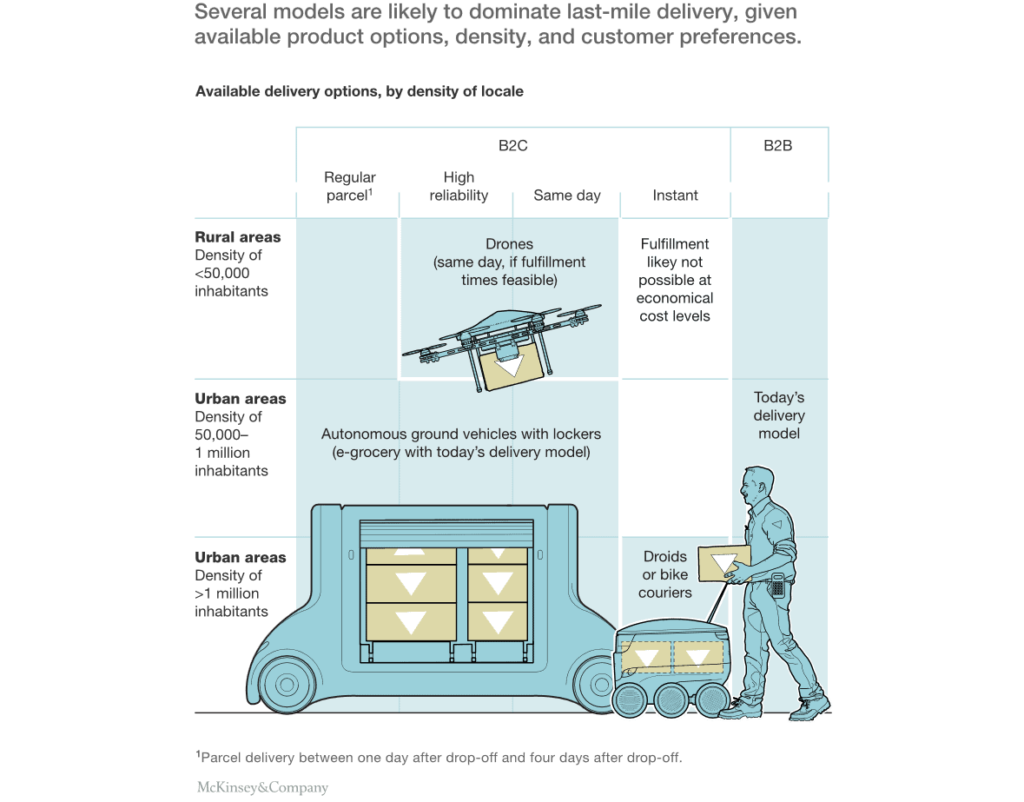
Source: McKinsey & Company
DIGITAL RETAIL ERAS
ช่วงแรกของยุคค้าปลีกดิจิทัลเริ่มขึ้นในปี 1995 จากการที่ Amazon และ eBay ให้บริการซื้อขายออนไลน์ในสหรัฐอเมริกา ในยุคนี้เองที่อินเตอร์เน็ตเป็นไปเพื่อประโยชน์ทางการวิจัยและเป็นเครื่องมือในการซื้อขายสินค้า ซึ่งการเชื่อมต่อนั้นทำผ่านสายโทรศัทพ์บนเครื่องพีซี ถึงแม้ค้าปลีกออนไลน์เริ่มต้นอย่างเชื่อช้า ก็ตาม แต่ก็ส่งผลถึงรูปแบบกิจการค้าปลีก ที่ได้เปลี่ยนแปลงตัวเองโดยทำให้ร้านค้ามีใหญ่มโหราฬ (Extra-Large: XL) และกลยุทธ์เดียวที่เป็นที่นิยมกันตอนกลางทศวรรษ 90s คือ “killer catetory” ร้านค้าขนาดเล็กมีขนาดใหญ่ขึ้นและจนกระทั่งใหญ่มากที่สุด ค้าปลีกต่างมุ่งสร้าง “wow factor” ด้วยกองทัพสินค้าที่มากขึ้นเท่าที่จะมากได้ในร้านของตัวเอง
ช่วงที่สองของยุคค้าปลีกดิจิทัลเริ่มต้นในปี 2007 ยุคที่มีการเปิดตัว iPhone ตัวแรกของ Apple การเปิดตัวของอุปกรณ์ชิ้นนี้เกิดขึ้นได้นั้นเป็นผลมาจากพัฒนาการและเติบโตของพลังการประมวลผล ราคาหน่วยประมวลที่ลดลง การได้รับความนิยมของการประมวลผลกลุ่มเมฆ การกำเนิดของ Internet of Things (IoT) และการซื้อขายสินค้าแบบทุกช่องทาง อุปกรณ์สื่อสารเคลื่อนที่ทำให้ผู้บริโภคเป็นอิสระและการเชื่อมต่อเข้าสู่เครือข่ายสื่อสารจึงเป็นกลายเป็นเป้าหมายสำคัญของค้าปลีก ตัวสินค้าและค้าปลีกต่างก็เริ่มทดลองนำเทคโนโลยีใหม่มาใช้ เช่น หุ่นยนต์ และ โดรน เป็นต้น สำหรับค้าปลีกที่มีหน้าร้านแล้ว Apple Store ได้สร้างนิยามใหม่ให้แก่การช้อปปิ้ง ได้แก่ ประสบการณ์ ปฏิสัมพันธ์กับลูกค้า และการบริการ การสร้างร้านค้าปลีกให้มีขนาดใหญ่ได้ถูกแทนที่ด้วยการสร้างประสบการณ์ลูกค้า (Customer Experience: CX)
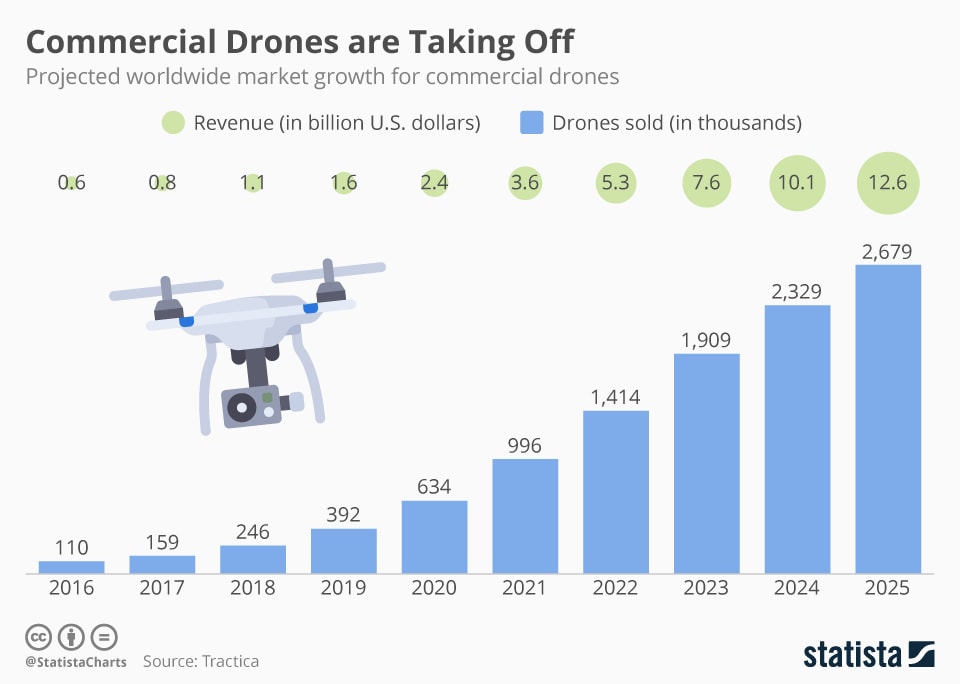
ช่วงที่สามของยุคค้าปลีกดิจิทัลนั้นมีจุดสังเกตุคือการถือกำหนดขึ้นของ data analytics และระบบปัญญาประดิษฐ์ที่มีความก้าวหน้าและซับซ้อนมาก เราได้ก้าวข้ามจากช่วง XL มาสู่ CX และในขณะนี้เองที่เรากำลังออกเดินทางจากช่วง CX ไปยัง ME ซึ่ง me หมายถึงผู้บริโภคแต่ละคนที่ล้วนมีความต้องการที่แตกต่างกัน ค้าปลีกเริ่มที่จะให้สร้างประสบการณ์ที่เอกลักษณ์ที่เป็นส่วนตัวไม่มีใครเหมือนและไม่เหมือนใครให้กับผู้บริโภคแต่คนละคน ขณะนี้ช่วงที่สามของยุคค้าปลีกดิจิทัลพึ่งจะเริ่มต้น ผู้ประกอบการค้าปลีกและผู้ผลิตควรรีบจับฉวยโอกาสนี้ไว้และสร้างประโยชน์อย่างเต็มที่ อย่าปล่อยโอกาสให้ผ่านเลยอย่างเปล่าประโยชน์
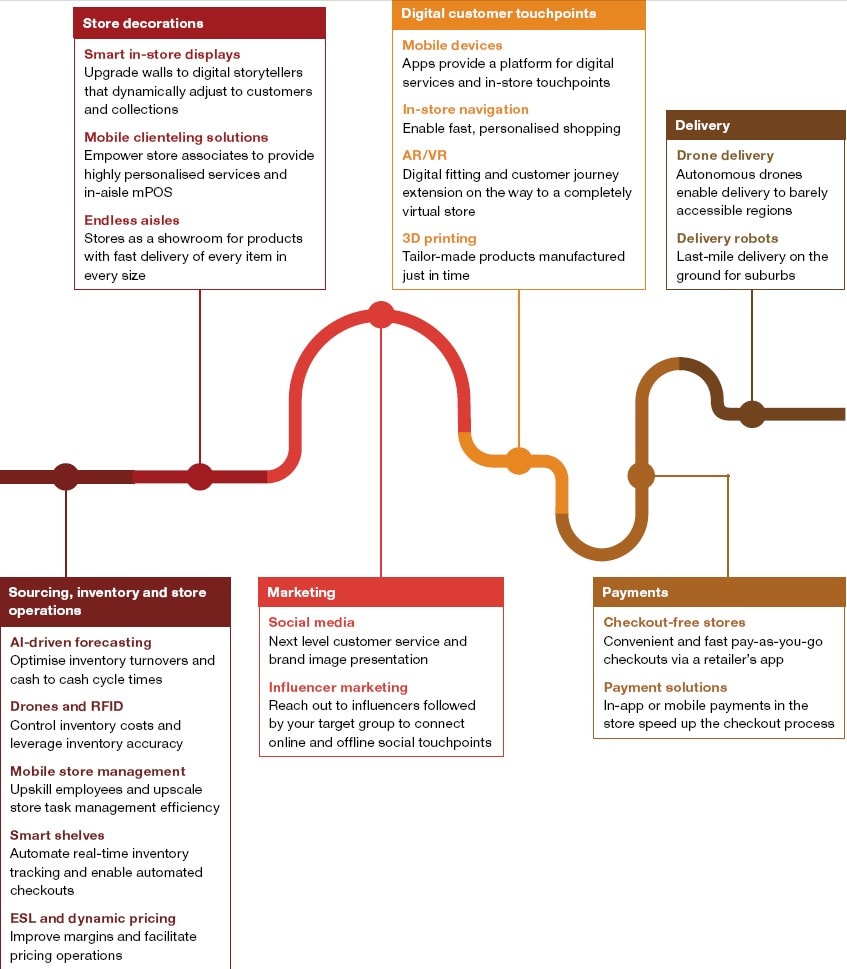
Source: Surviving the Retail Apocalypse, PricewaterhouseCoopers
CUSTOMER EXPERIENCE
การเพิ่มพูนประสบการณ์ลูกค้าเป็นไปได้โดยอาศัยเทคโนโนลยีดิจิทัลภายในร้านนับตั้งแต่กระบวนการประชาสัมพันธ์ การตลาด และการส่งเสริมการขาย การเดินทางของลูกค้าแบบดิจิทัลที่พูดถึงกันนั้นหมายถึงวัฎจักรอันสมบูรณ์ของค้าปลีกนับตั้งแต่การค้นพบลูกค้าไปจนถึงการสร้างความภักดีกับลูกค้านั้น นับวันก็ยิ่งทวีความซับซ้อนมากขึ้น อย่างไรก็ดีผู้ค้าปลีกเองก็ลงกับแอปต่างๆ ที่ใช้ภายในร้าน ในการสร้างประสบการณ์เฉพาะบุคคลสำหรับผู้บริโภคนั้น ผู้ค้าปลีกควรจะต้องคิดหาวิธีการอำนวยความสะดวกทางด้านข้อมูลสินค้าที่ลูกค้าสามารถเข้าถึงได้ด้วยอุปกรณ์สื่อสารของตัวเอง
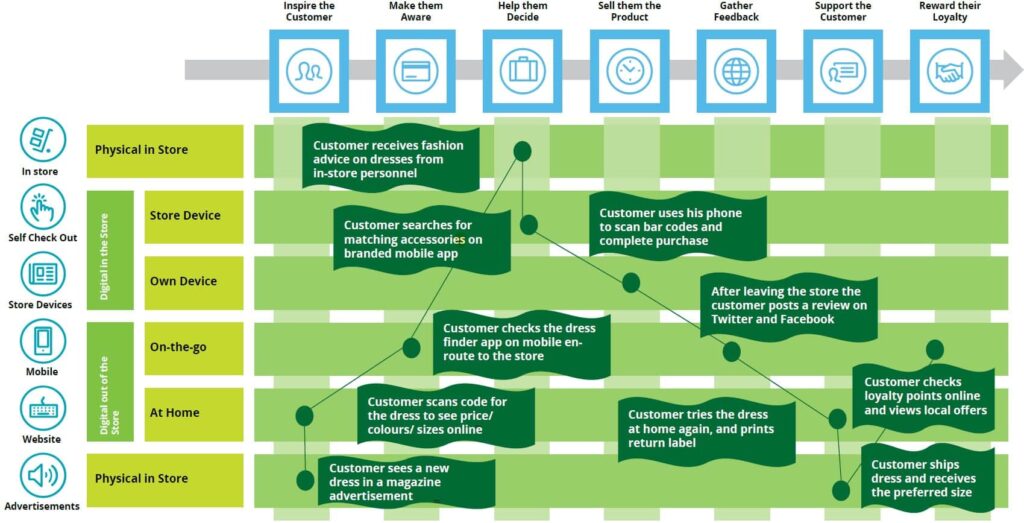
to elevate customer experience
Source: Industry report, Deloitte Analysis
เทคนิคการสร้างความผูกพันธ์กับลูกค้าผ่าน AR VR และ AI กำลังเป็นที่ดึงดูดและสร้างการเปลี่ยนแปลงในขั้นตอนการสร้างปฏิสัมพันธ์กับลูกค้าให้มีความรวดเร็วมากขึ้น ในขณะที่ความสนใจที่มีต่อเทคโนโลยียานพาหนะไร้คนขับและโดรนได้อิ่มตัวเต็มที่ในทุกมุมโลก เทคโนโลยีเช่น AI และ VR ได้สำเสนอประสบการณ์เสมือนจริงที่ยากจะหาคู่เทียบได้โดยที่ไม่ต้องก้าวท้าวออกจากบ้าน ลูกค้าสามารถลองเสื้อผ้าได้โดยเข้าไปในห้องลองเสื้อผ้าเสมือน พร้อมทั้งมีพนักงานบริการช่วยเหลือส่วนตัวคอยให้บริการ
VR FOR CUSTOMER ENGAGEMENT
คุณค่าของเทคโนโลยีความจริงเสมือน (VR) เกิดจากหลอมรวมอารมณ์ความรู้สึกที่เกิดจากการช้อปปิ้งในร้านปกติให้เกิดเป็นประสบการณ์ช้อปปิ้งออนไลน์ บทความจาก HBS Digital Initiative กล่าวถึงเทคโนโลยีนี้ไว้ว่าเป็นตัวช่วยให้ผู้ขายที่ไม่มีหน้าร้านสามารถเข้าถึงกลุ่มลูกค้าต่างๆ ได้มากขึ้น Alibaba ที่ขายสินค้าได้เป็นล้านๆ ชิ้น กำลังทำการแปลงสินค้าดังกล่าวให้เป็นโมเดล 3D ซึ่งมีค่าใช้จ่ายสูงและมีขั้นตอนจำนวนมากมายเต็มไปหมด แม้ว่า Alibaba เป็นบริษัทที่มีทุนหนา แต่ว่าผู้ขายจำนวนมากเป็นส่วนใหญ่ที่อยู่บน platform นี้คือผู้ขายรายย่อยทั้งขนาดเล็กและขนาดกลาง ผู้ประกอบการเหล่านี้ไม่ได้มีแรงจูงใจที่จะต้องจัดแสดงภาพสินค้าของตัวเองเพราะต่างก็ต้องการหลีกเลี่ยงปัญหาทางด้านทรัพย์สินทางปัญญา
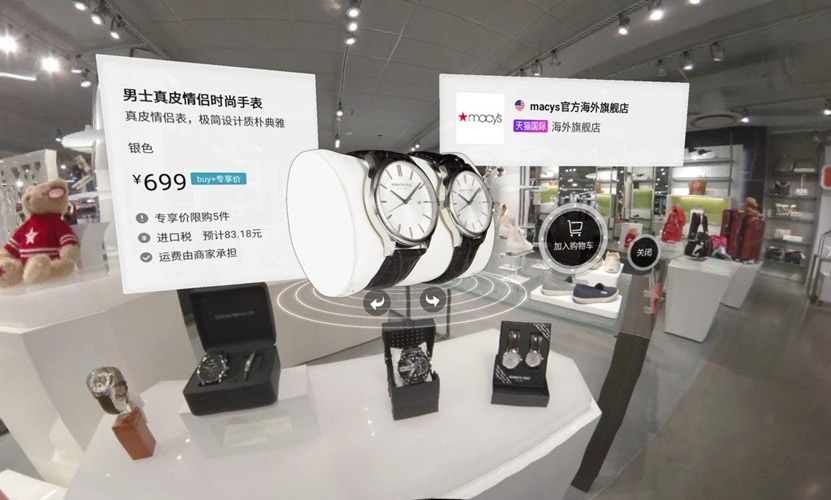
Source: WSJ, Alibaba
Alibaba ได้เปิดตัวห้างสรรพสินค้าเสมือน “Buy+” และภายในชั่วโมงแรงของวันแรกที่ห้างเปิดตัว พบว่ามีผู้เข้ามาทดลองใช้บริการเป็นจำนวนกว่า 30,000 คน ห้างสรรพสินค้าเสมือน Buy+ นี้นับว่าเป็นความพยายามครั้งล่าสุและอลังการที่สุดในการพลักดันให้ VR เป็นส่วนหนึ่งของการช้อปปิ้งในอนาคต ทาง IKEA เปิดให้ลูกค้าเข้ามาออกแบบห้องครัวของตัวเองโดยใช้ชุดความจริงเสมือนแบบสวมใส่ศีรษะ HTC Vive ส่วน Audi ก็ใช้อุปกรณ์เดียวกันในโชว์รูม ส่วน eBay และ Mayer ในออสเตรเลียได้ร่วมกันเป็นห้างสรรพสินค้าเสมือนจริงแห่งแรกในประเทศ มีกระแสข่าวจากบริษัทสตาร์ทอัพทั้งในอเมริกาและยุโรปว่าได้พัฒนาระบบจำลองการช้อปปิ้งแบบเหนือความจริงพร้อมกับหุ่นยนต์ผู้ให้บริการช่วยเหลือแก่มนุษย์ ข้อมูลจาก Vice ได้ระบุว่า Goldman Sachs คาดการณ์ไว้ว่าตลาดของ VR และ AR เพื่อการค้าปลีกนี้จะมีมูลค่ากว่า $1.6 พันล้านเหรียญสหรัฐภายในปี 2025 นี้
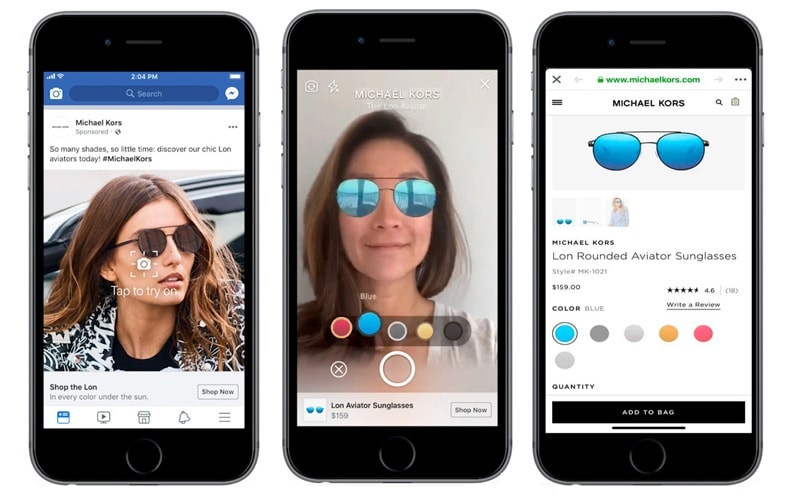
Source: Facebook
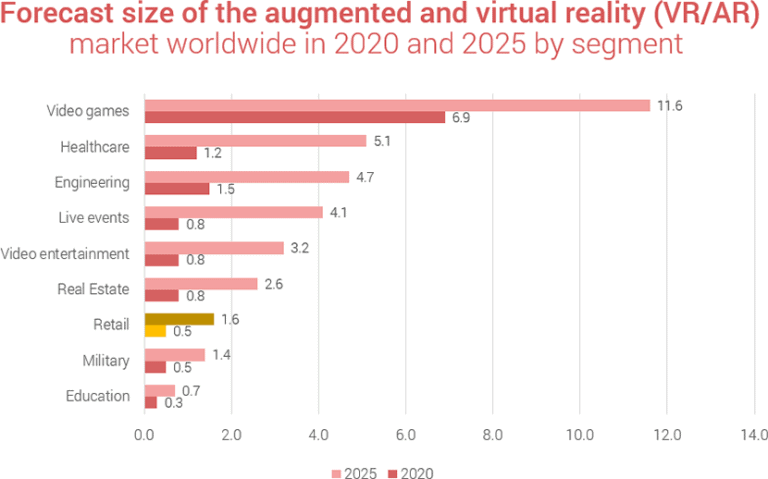
Source: Statista
THE SIDE EFFECT
เทคโนโลยีการช้อปปิ้งเสมือนจริงมีประโยชน์อยู่มาก อย่างไงก็ตามยังพบว่าเกิดผลพวงอันที่ไม่น่าพึงประสงค์อยู่บ้าง รายงานจากสำนักข่าว Vice News ได้กล่าวว่าลูกค้าที่เข้าใช้บริการห้างสรรพสินค้าเสมือนจริง Buy+ ได้รับประสบการณ์ที่โดดเดี่ยวและแปลกแยก ทั้งนี้เพราะว่าการช้อปปิ้งดังกล่าวมิได้จำลองบรรยากาศความมีชีวิตชีวาของห้างสรรพสินค้าของจริงไว้ การช้อปปิ้งในห้างสรรพสินค้าเสมือนนี้เป็นเพียงการจ้องมองสินค้าที่ต้องการ และตัวลูกค้ามีตัวตนเป็นเพียง avatar ไม่มีแขนขาอวัยวะร่างกาย ประสบการณ์โดดเดี่ยวเหนือจริงนี้อาจจะเป็นกลไกลเล็กๆ ที่นำไปสู่ความไม่พึงพอใจต่อการช้อปปิ้งเสมือนในภาพรวมก็อาจเป็นได้

